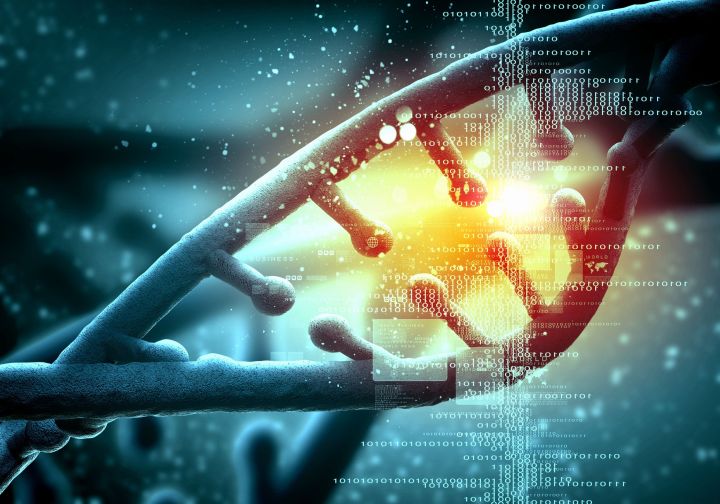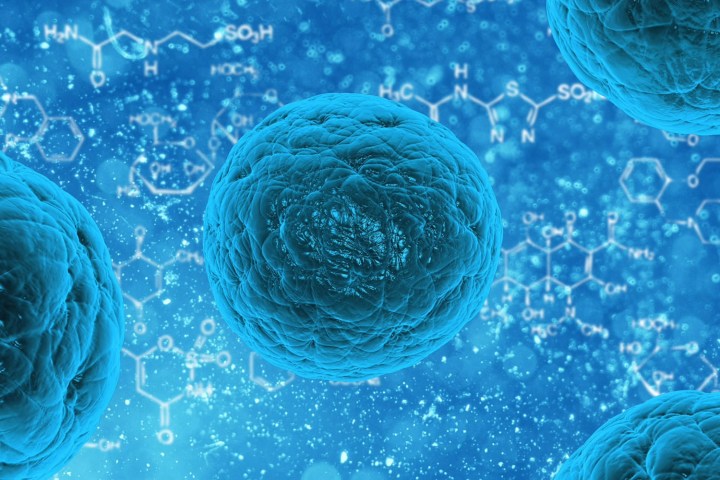
Types of Modern Cloning
“Cloning” isn’t a very scientific word, so it’s no surprise that there are several different techniques that you could call cloning. That includes the common gene cloning, where biological materials are reproduced — and used for medical techniques or even meeting demand for red meat — as well as therapeutic cloning, which involves swapping nucleus DNA between eggs for a shortened development process.
But for the real, “that’s what I meant” style of cloning, we need to talk about somatic cell nuclear transfer (SCNT). This is the type of cloning that takes the DNA of an adult specimen and reproduces it, so that an embryo with that same DNA is created. It’s the sort of science that inspired stormtroopers and dinosaurs in our favorite movies, and it’s probably exactly what you were thinking of. So let’s talk about how somatic cell nuclear transfer works.
Step 1: Extract DNA from a donor

First, scientists need healthy, durable cells from a donor — a.k.a. the organism they aim to clone. There are different kinds of cells in the average sexual organism, but somatic cells are the “neutral” type of cell that just hangs out doing its job with the typical two complete sets of chromosomes.
Somatic cells can’t be found among red blood cells, but white blood cells are somatic and a common source for DNA products. Skin cells and the traditional cheek-swab also work, but the cells have to be healthy and undamaged. That’s why it is usually impractical to try to clone ancient frozen or trapped animals: Their cells are almost always heavily damaged.
Step 2: Prepare an egg cell
While one part of the scientific cloning team is working on extracting a plentiful supply of somatic cells from the donor, another part is working to prepare a viable egg cell. It doesn’t necessarily have to be an egg cell from the same species, but for greater chances of success, the closer the better.
When scientists find the right undamaged egg cells, they carefully extract the nucleus of the cell. The nucleus is what holds the single set of chromosomes that contributes to reproduction. But for cloning, they don’t want that DNA — they want an intact, empty shell that can house an embryo. So the nucleus and all its DNA is removed, while the rest of the egg is delicately preserved.
Step 3: Insert somatic cell material
Remember, because somatic cells are complete, adult cells not used for reproduction, they have the full dual set of chromosomes, already present and ready for action. However, scientists need to get this DNA into the egg cell and prepared to grow into a new organism. So they — again, very carefully — remove the nucleus and insert it into the waiting, empty egg cell.
The goal is to combine them into a single cell again, which is not easy. Current successful techniques use a very light, directed flow of electricity so that the nucleus and egg cell bind together, and hopefully agree to their new living arrangement.
Step 4: Convince the egg that it’s fertilized and implant it

Now we have a cloned egg, ready to start growing! But, while the egg does have two sets of chromosomes and, in theory, everything it needs to grow into a copy of the donor organism, it hasn’t actually been fertilized — and it can’t be fertilized without ruining the cloning process.
So scientists try to convince the egg that it’s fertilized and should start growing. This is another area where there is a lot of experimentation with new techniques: Usually, the egg is subjected to chemical cocktails designed to trigger the growth process, often while being zapped with more electricity (sometimes science really is like the movies).
When the cell starts to divide, scientists move quickly onto the next stage, keeping the egg in similar conditions to the real reproductive process. If the egg starts to develop into an embryo that appears healthy, they typically implant that embryo into a living female organism to gestate. This is better for the egg and much less expensive than trying to grown an embryo externally in a lab.
Step 5: Repeat until viability

As you probably noticed, there’s a certain amount of uncertainty and delicate work involved in all the previous steps. Even small amounts of cell damage can be disastrous, and there’s no guarantee a doctored egg will develop correctly either inside or outside the carrying organism. In other words, viability is a major issue. There are a lot of failed attempts and embryos that just don’t develop correctly (often going awry when the embryo is only a small collection of cells), so it takes massive resources, plenty of time, and hundreds of attempts to create a successful clone. Successful live births are a rarity.
Even then, the process is not usually kind to the successful clones. They tend to suffer from shortened lifespans and other problems summed up by what you could call DNA whiplash. However, these problems have diminished as technology has advanced.
Where Cloning is Today
The first true cloning using SCNT occurred in 1996 after 276 attempts: The famous Dolly the sheep. This was quickly followed by cloned calves in Japan, and then a number of other animals were added to the list, including cats, dogs, rabbits, rats, horses, and even a rhesus monkey.
Except for rumors, there is no evidence that a human has ever been cloned — primates are especially difficult to clone, and humans are the most difficult of all because of the complex way that our cells divide. Reports of human clones have either been debunked or dropped due to lack of evidence.
Full cloning like this also has relatively little value to the scientific community thus far. Gene cloning is far more advantageous when it comes to healthcare and profit, and much easier to accomplish. True cloning with SCNT has become something of a sideshow as a result: Today, most interest in the process focuses on the applications of stem cells from successful embryos, but that also remains an expensive, controversial process for now.







